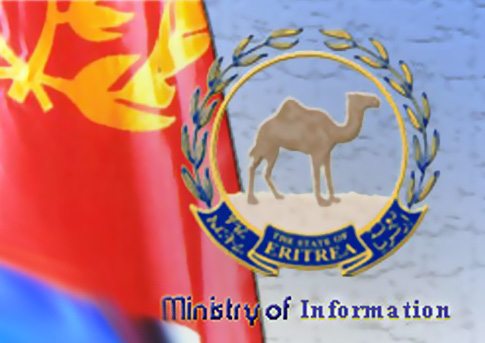[from: A Week in the Horn of Africa, Dec. 9, 2011 issue.]
This week, following several days of meetings in Baidoa, Al-Shabaab militants have announced they have changed the name of their organization to Imaarah Islamiyah – Islamic Authority. Among those attending the meeting were Sheikh Ali Dhere, Sheikh Mukhtar Robow (Abu Mansoor), Fu’ad Shongole and Sheikh Hassan Dahir Aweys. The leader of Al-Shabaab, Ahmed Abdi Godane (Abu Zubeyr) did not attend. In a subsequent statement, the group said the change was not limited to the name but would also involve a change of tactics. Sheikh Mukhtar Robow explained the name change: “Al-Shabaab means ‘youth’ but many of us, including the leaders, are very old so we want to change the name to Imaarah Islamiyah”. Other reasons appear to be that Al-Shabaab, following a number of recent defeats, is feeling the need to try to renew its support and put the continuing and protracted leadership conflicts and bickering behind it. It is also facing greater pressure than ever before with Kenya involved in the conflict and with IGAD requesting further help from Ethiopia. The effectiveness of TFG/AMISOM cooperation has had its effect as has the activities of Ahlu Sunna wal Jama’a in central areas. There has also been growing pressure within Al-Shabaab to rein back the role of foreign fighters arguing that this is necessary in order to try to regain the trust of the population.
It appears from the list of those senior commanders participating in the meeting that the ultra-Salafi element of the Wahabi faction, supported by Isaias Afeworki, Eritrea and its allies, has finally managed to highjack the agenda and leadership of Al-Shabaab, essentially sidelining Godane (Abu-Zubeyr). A significant element among those attending the meeting included senior members of the former Al-Itihaad Al-Islamiya (AIAI) led by Hassan Dahir Aweys and Hassan Turki. Among them were Abdullahi Ali Hashi, former leading financier of Hizbul Islam, and Dr. Omar Iman, chair of Hizbul Islam before Hassan Dahir Aweys took control.
In 2010, before Hizbul Islam was swallowed by Al-Shabaab, its chairman, Sheikh Hassan Dahir Aweys tried to persuade Al-Shabaab’s leaders to agree to change their name and bring Hizbul Islam and Al-Shabaab together as a single organization. Al-Shabaab leaders rejected this and insisted on swallowing up Hizbul Islam, forcibly bringing its people under Al-Shabaab control. This meant that long-standing leaders and experienced Al-Itihaad Al-Islamiya (AIAI) leaders were sidelined, humiliated and undermined by callow and aggressive Al-Shabaab youngsters who saw them as both clannish and corrupt. The two leading figures in Hizbul Islam, the ailing Hassan Turki and Sheikh Hassan Dahir Aweys were told to stay in Ras Kamboni and Eelasha Biya areas respectively. Al-Shabaab made a deliberate effort to limit the influence of those AIAI leaders who had been so significant during the supremacy of the Islamic Courts Union in Mogadishu in 2006 and within the Eritrean-based Alliance for the Re-Liberation of Somalia (ARS) during 2007-2008. Some of the AIAI leaders quietly submitted to Al-Shabaab’s takeover in 2010, others retired into the background, waiting for their chance to take action again.
This finally came this year as Al-Shabaab ran into serious difficulties, first in Mogadishu at the hands of the TFG and AMISOM, and then in Gedo where government and Ahlu Sunna fighters won a series of victories over Al-Shabaab brigades. Ahlu Sunna also won a number of victories in central areas. Within a matter of months, Al-Shabaab lost a large number of fighters and was driven out of wide swathes of territories, losing Mogadishu as well as other areas. Al-Shabaab’s firepower, its morale and its internal cohesion were all significantly affected. This provided the former AIAI/ Hizbul Islam members with a cause and an opportunity to try to reclaim their lost influence. Using his former links with Eritrea, Hassan Dahir Aweys saw the opportunity to fracture Al-Shabaab’s leadership. Reactivating his political ambitions, he created a strong group within Al-Shabaab’s leadership including Sheikh Mukhtar Robow (Abu Mansoor), Fuad Shongole and Sheikh Ali Dhere, all of whom had their own reasons, to stand up against Ahmed Godane (Abu Zubeyr), Ibrahim Afghani, Mahat Karate, Abu-Muscab and Abu Muslim. The group has now forced Godane to accept the leading role of the former AIAI/Hizbul Islam leadership, who are seen as better understanding the dynamics and politics of the region and who might be capable of regaining traditional Somali national and clan support. A group, including Dr. Omar Iman and Abdullahi Ali Hashi has been tasked to figure out a way for Al-Shabaab to survive against the anticipated concerted operations of Kenya, Ethiopia, the TFG, AMISOM and Ahlu Sunna wal Jama’a.
One element in this is a continued flow of ammunition supplies arriving in Kismayo and nearby makeshift ports for Al-Shabaab. Last month, two dhow shipments arrived bringing an assortment of ammunition including RPG rocket-propelled grenades, as well as landmines and hand grenades. Together with the supplies provided by air from Eritrea to Baidoa, these supplies have led to a recent increase in the number of attacks by Al-Shabaab forces. They will also allow Al-Shabaab to arm the recruits it has been seizing from various areas to try to make up for recent losses.
Among recent attacks have been last weekend’s attack on a TFG military camp at Hayo near Afmadow in Lower Juba. Al-Shabaab claimed to have taken control of the camp for several hours, killed more than 80 TFG troops and capturing 11 vehicles. Kenyan and TFG forces have been closing in on Afmadow for several weeks, and a Kenyan military spokesman said that more than 40 Al-Shabaab fighters had been killed in the fighting and that eleven TFG soldiers had died, though a number had also been wounded. Yesterday there was also fighting at Tabta and Qoqani villages in Lower Juba, with 8 Al-Shabaab fighters killed and another 10 wounded. On Monday, Kenyan jets launched air strikes on two Al-Shabaab camps south of Afmadow, killing a number of Al-Shabaab fighters and destroying technical vehicles. The same day, a Kenyan warship sank a speedboat which had tried to attack the Kenyan vessel. Clashes have also continued in Mogadishu where Al- Shabaab has been carrying out bombings. On Wednesday there were reports of heavy fighting in the Karan and Huriwa districts of the city when Al-Shabaab launched an attack on some TFG positions.
Meanwhile, today, UN Secretary-General Ban ki-Moon paid the first visit by a UN Secretary-General to Mogadishu since 1993. He told a news conference that he believed Somalia was now at a critical juncture “a moment of fresh opportunities for the future of the Somali people…to bring a new measure of stability and possibilities to people’s lives”. He announced that the UN Political Office for Somalia would relocate to Mogadishu next month from Nairobi. One reason for this is so it can keep a closer watch on the activities of the TFG and ensure it continues to make progress towards the roadmap which details the progress to be made to improve security, governance, reconciliation and the constitution before the end of the transition in August next year. The UN Security Council has made it clear that funding will be withdrawn unless there is a serious effort to implement the roadmap. After his visit to Mogadishu, the Secretary-General also paid a visit to Dadaab, the world’s largest refugee camp in eastern Kenya, near the border with Somalia.
***************
Check the Somalia archive for related posts.





